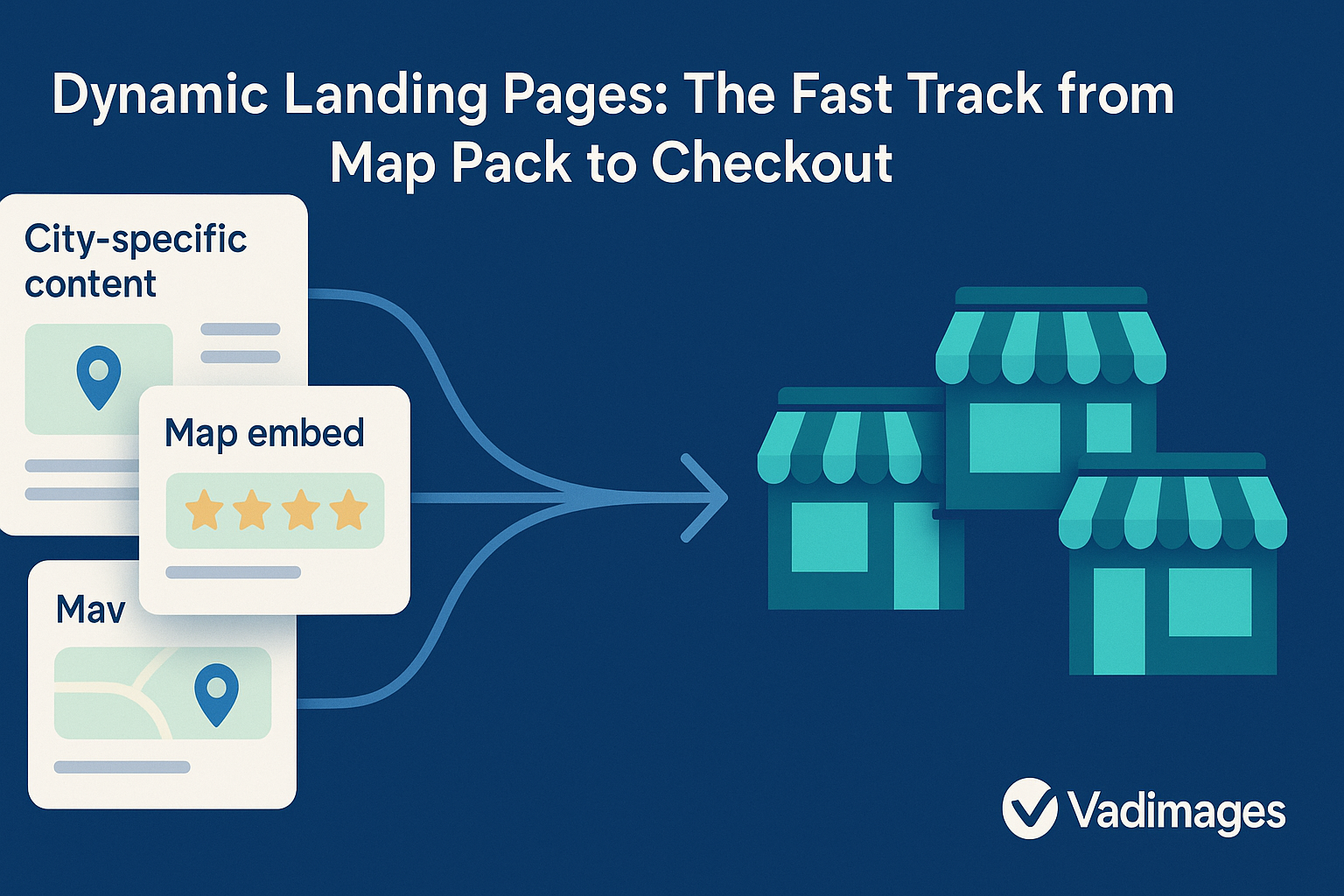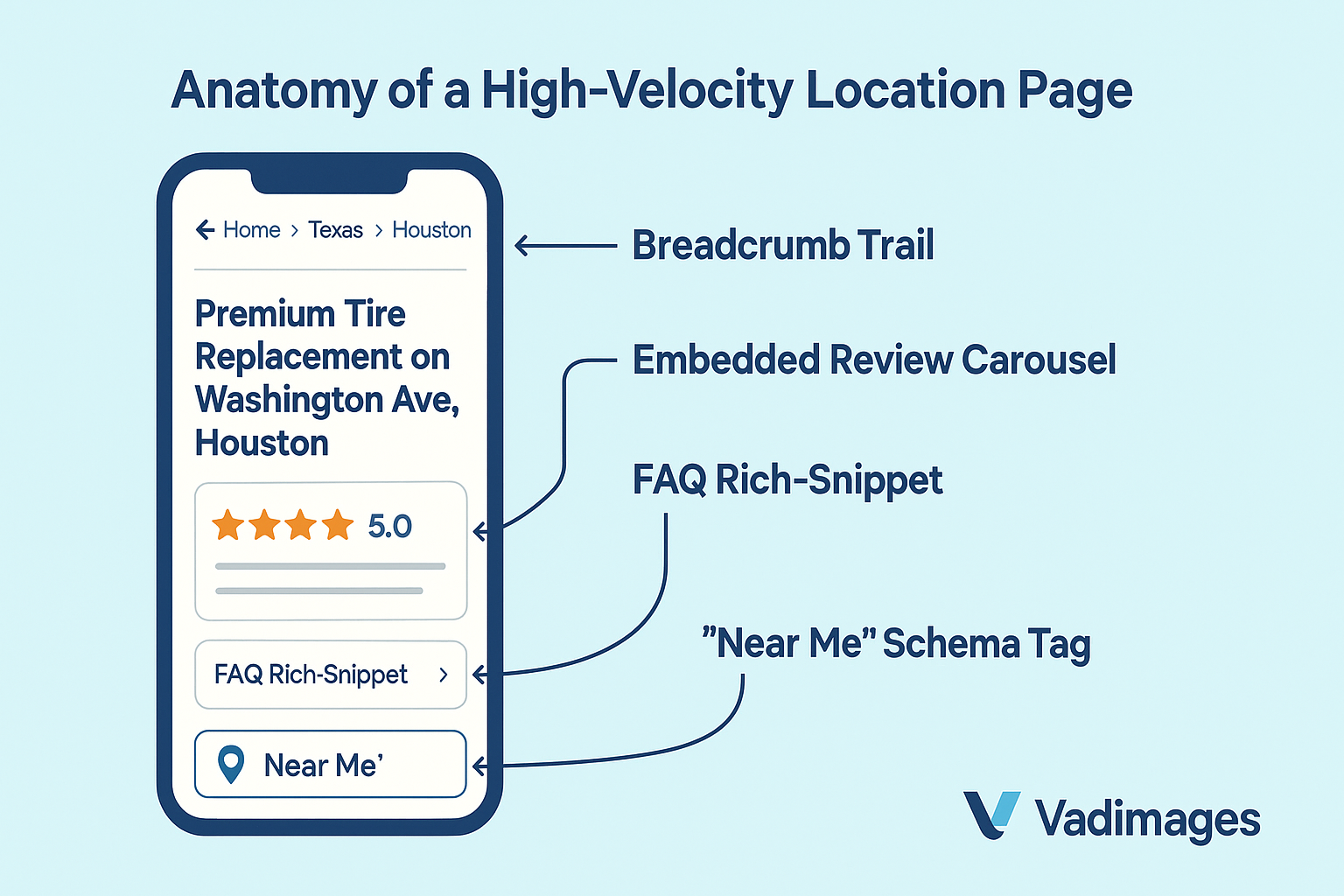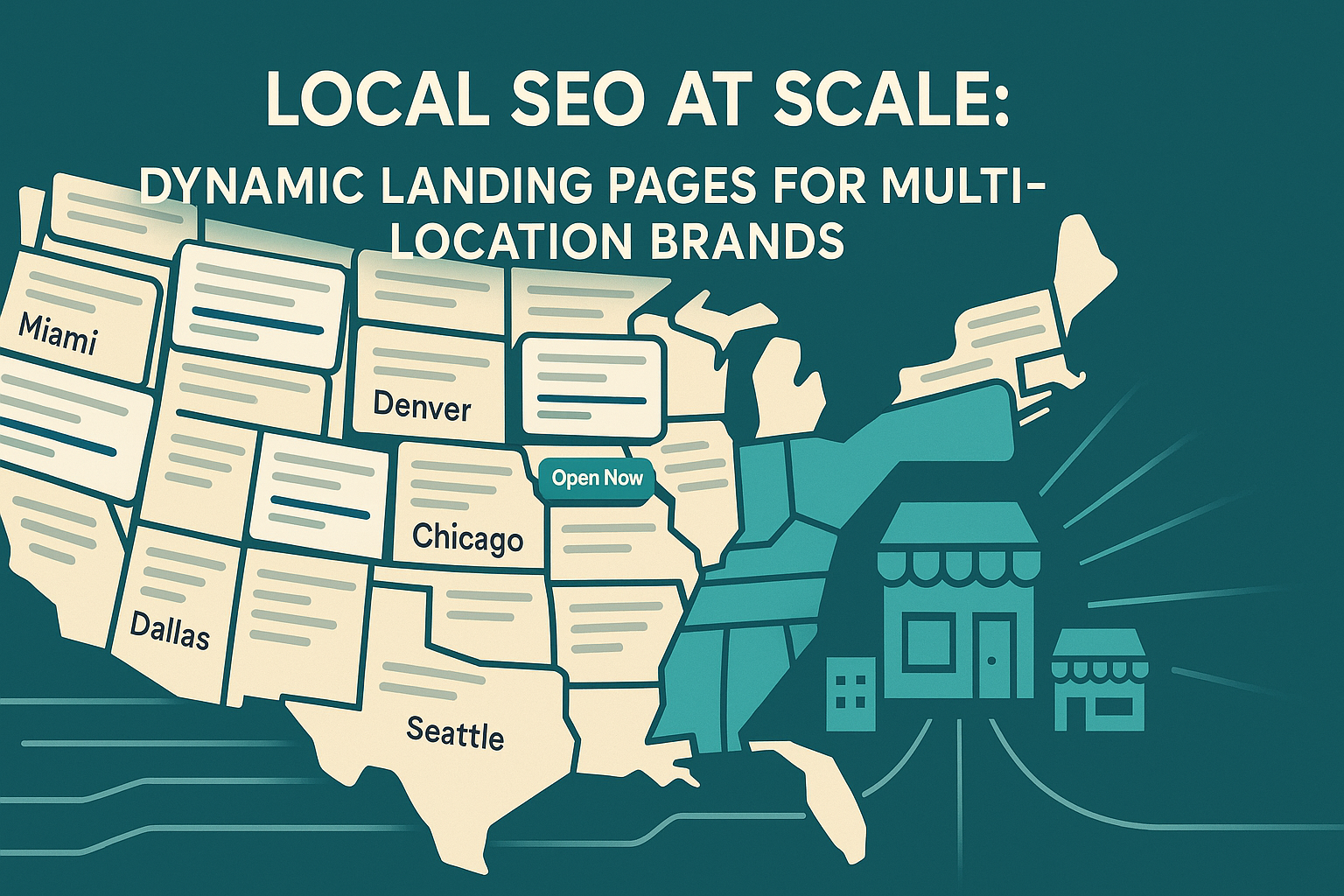Even after two decades of algorithm tweaks, sixty-eight percent of American small and mid-sized businesses still admit they “struggle to show up where our customers actually live.” The pain grows exponential once you operate in dozens—or hundreds—of ZIP codes. Google’s March 2025 core update rewarded freshness and entity-level context, then folded those signals into AI-generated overviews that now float above the classic three-pack. Brands that ship one static “Locations” page watched visibility melt overnight.
Why Multi-Location Local Visibility Still Hurts in 2025
The update exposed a simple math problem. Google Business Profile counts as only one vote in the new ranking model; the rest comes from on-page signals tuned to micro-regions. PromoRepublic’s spring survey of enterprise marketers confirms that proximity, local intent phrases, and structured data outweigh raw domain authority for distributed brands this year. Add Google’s conversational “Answer Engine” layer—where an AI synopsis answers “best tire shop near Denver Union Station” without a click—and the cost of stale or duplicate city pages climbs fast.
Dynamic landing pages solve the puzzle because they let you generate unique, schema-rich, lightning-fast canvases for every address in your portfolio. Each page inherits brand style while swapping in neighborhood landmarks, hyper-local reviews, real-time inventory, and trust badges tuned to state regulations. When Google crawls, it meets content that looks handcrafted, not mail-merged; when shoppers land, they find directions, hours, and promo codes ready for the checkout.

Dynamic Landing Pages: The Fast Track from Map Pack to Checkout
A modern location page is a miniature PWA rather than a brochure paragraph. Server-side rendering on a framework like Next.js ensures the core content paints before your competitor’s third-party widget loads. Streamed data hydrates store hours when public-holiday micro-schema flips from “open” to “closed” at midnight local time. Automatic insertion of high-resolution OpenGraph images keeps social shares from looking like template spam. Because each page inherits the parent component library, design debt stays near zero even if you launch fifty new markets after Series A funding. More important: dynamic canonical tags prevent the city grid from cannibalising itself, a mistake we still diagnose weekly in 2025 audits.
Google’s own crawler now tests holistically: it scores layout stability for Core Web Vitals, parses price microdata for commercial queries, and extracts sentiment snippets for its AI answer box. Sites that stitch data at build time miss the freshness window; sites that stream, cache, and invalidate per locale win the all-important “within one hour” freshness boost noted in post-update field experiments.

Anatomy of a High-Velocity Location Page
Start with a canonical URL pattern that reads naturally: brand.com/tx/houston/washington-ave. The H1 mirrors the intent phrase—“Premium Tire Replacement on Washington Ave, Houston”—and the title tag appends the 2025-ready city + service format. Above the fold, a geo-targeted hero image pulls from a headless DAM, so your Dallas photo never shows up in Detroit. Address, phone, and business hours live in both visible HTML and JSON-LD because Google’s entity reconciliation now double-checks parity. A scrolling block of user-generated reviews renders server-side first, then refreshes via client hydration to keep JavaScript weight low. Each service paragraph weaves in the twin core keywords—local seo 2025 and location landing pages—alongside neighborhood colloquialisms mined from your own query logs. A sticky coupon bar toggles automatically for devices detected within a ten-mile radius, translating rank into foot traffic rather than vanity impressions.
From Blueprint to Revenue: How Vadimages Automates Local Growth
Brands hire Vadimages when they realise their marketing stack can no longer stretch across state lines without splitting at the seams. Our Local Landing Page Engine spins up thousands of Next.js-powered pages from a single schema yet personalises hero copy, meta tags, and schema objects down to the street number. An in-house performance gateway employs edge functions to deliver Time to First Byte under fifty milliseconds anywhere in the continental United States. Every deployment ships with proprietary health checks that ping Google’s indexation API in real time, ensuring no page is left orphaned after a store-opening frenzy.
If your CMO needs proof, ask about the franchise retailer whose organic conversions climbed forty-two percent within ninety days of going live on our platform. Better yet, book a discovery call this week and we will run a complimentary Local GAP audit—spotting the keyword voids your competitors have already staked out since the March 2025 update. Whether you operate ten clinics or four hundred repair bays, Vadimages turns location pages into predictable revenue engines so you can spend less time worrying about rankings and more time stocking shelves.


